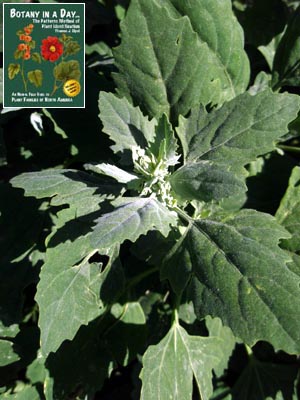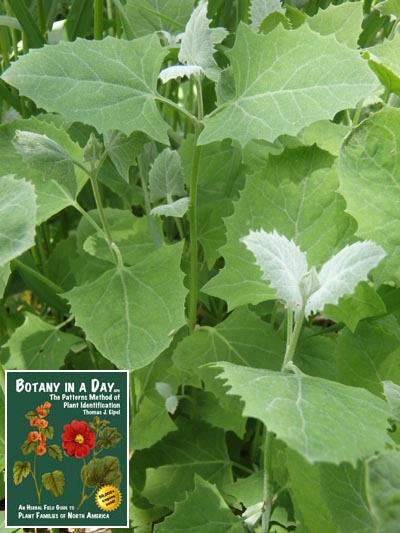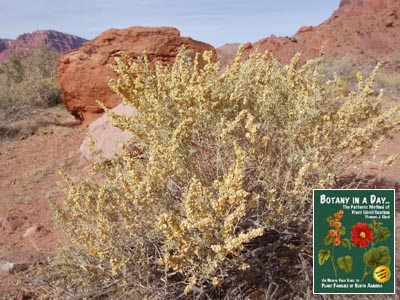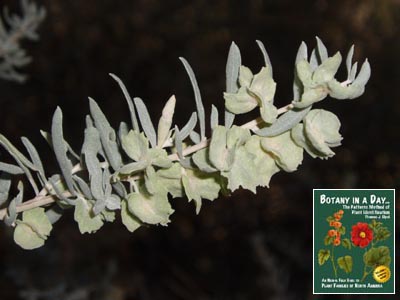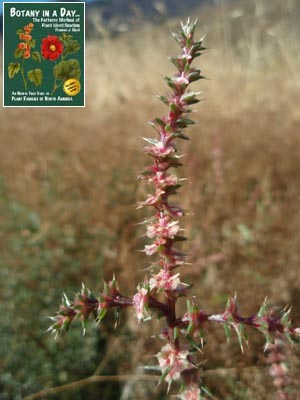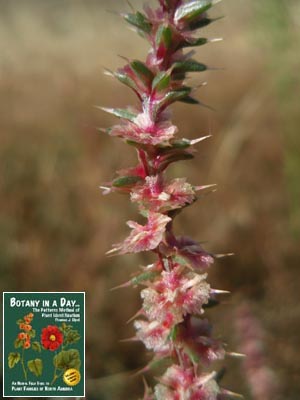| Thomas J. Elpel's Web World Portal  Wildflowers & Weeds |  


 Wildflowers-and-Weeds.com
Wildflowers-and-Weeds.com Plant Identification, Foraging, and Ecology with Thomas J. Elpel Home | Plant Identification | Plant Families Gallery | Edible Plants | Mushrooms | Links Desertification & Weed Ecology | Weed Profiles | Search this Site |
|
Chenopodiaceae Look closely at a beet, chard, or spinach plant the next time you see one going to seed in the garden. You might notice little green "globs" forming along an upright stalk, sometimes colored with specks of yellow, the sign of pollen and stamens... yes, these globs are true flowers! If you find a weedy plant lacking obvious flowers, and forming globby or poky seeds along the stems, it is likely you have a species from this family. If you examined the flowers of a Goosefoot plant with a lens you would see 2 to 5 (usually 5) sepals, often united, and no petals. There are an equal number of stamens as sepals. The ovary is positioned superior (half inferior in Beta) and consists of 2 (rarely 3 to 5) united carpels (syncarpous) forming a single chamber. It matures as a nutlet. Key Words: Weedy plants with globby or poky flowers, found in disturbed or alkaline soil. Please e-mail Thomas J. Elpel to report mistakes or to inquire about purchasing high resolution photos of these plants.
There are more
Return to the Plant Families Index |
|
Looking for life-changing resources? Check out these books by Thomas J. Elpel:
|
|
|

